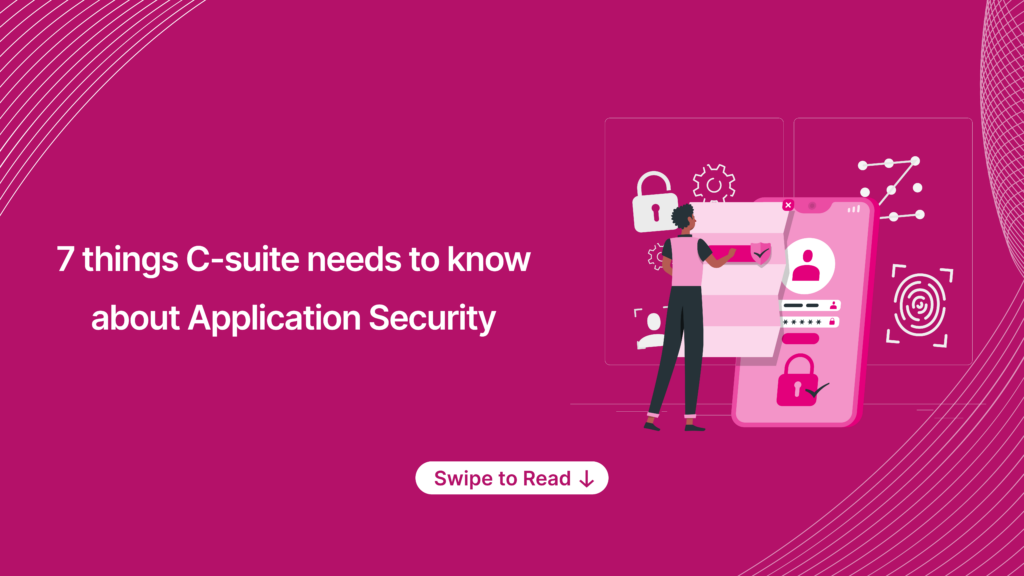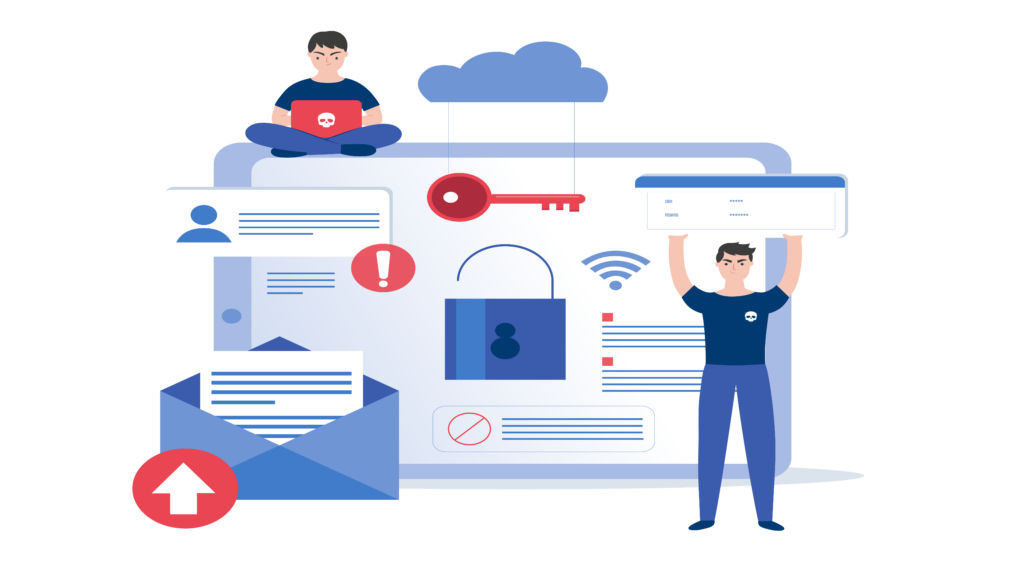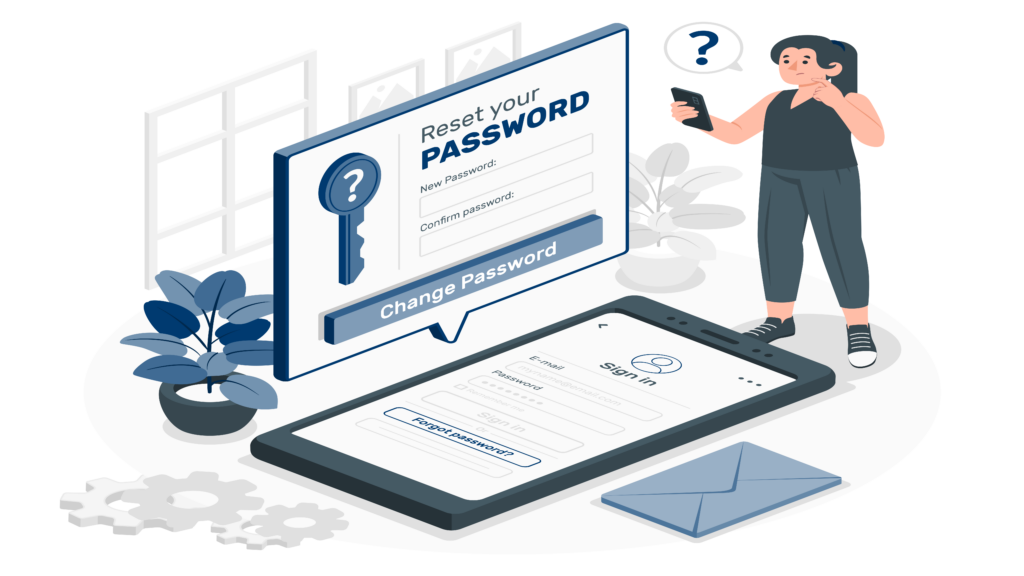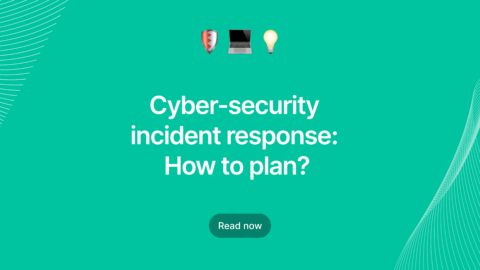
Every time when application security experts spend their hard time inventing a new technology, it’s only a matter of time before hackers find a new way to come over it. With malicious attacks increasing every day, it is now the right time for the C-suite to create a solid plan to manage risk before cyber-attacks become a big headache.
The IT department of your company might now have all the knowledge about what sort of data can be critical for your business. They might need to be made aware of the level of risk tolerance that the executive board or the team is comfortable with.
The good news is that it is impossible to create hack-proof applications because bugs will slip through if they get into the hands of attackers. All you can do is minimize the bugs, which can further help you minimize the damage.
In this blog, we will discuss application security and all necessary factors that the C-suite must understand related to application security.
What is application security?
Application security, also known as appsec, involves safeguarding computer applications from external security risks by employing various security measures, including software, hardware, techniques, and best practices.
Initially, security was often overlooked in software design. However, in today’s landscape, it has become a paramount consideration at every stage of application development, from initial planning to ongoing deployment. With the proliferation of applications across networks, the scope of potential threats continues to expand rapidly. Therefore, application security strategies must evolve to counter a diverse array of security risks effectively.
Why is application security important?
Application security, encompassing the monitoring and management of application vulnerabilities, holds significant importance for several reasons:
1. Identifying and addressing vulnerabilities diminishes security risks, ultimately shrinking an organization’s potential attack surface.
2. While software vulnerabilities are prevalent, not all pose severe threats individually. However, when exploited in combination, even minor vulnerabilities can contribute to sophisticated attack chains. Thus, mitigating these vulnerabilities helps reduce the overall impact of potential attacks.
3. Adopting a proactive stance towards application security proves more effective than reactive measures. By staying ahead of potential threats, defenders can detect and neutralize attacks at earlier stages, often preventing any harm from occurring.
4. With the increasing migration of data, code, and operations to the cloud, the likelihood of attacks targeting these assets rises. Implementing robust application security measures serves to mitigate the impact of such attacks on cloud-based assets.

Application security factors the C-suite needs to understand
1: Understanding the principle of least privilege
The Principle of Least Privilege is a fundamental aspect of secure design. It entails granting individuals only the access permissions required to perform their specific job functions. For instance, in a system handling sensitive customer financial data, access should be restricted to authorized personnel. While someone managing appointments may not require access to such information, an account manager likely does.
Adhering to this principle mitigates the risk of unauthorized access. In the event of a security breach, limiting access minimizes the potential impact, reducing the scope of sensitive data exposure.
2: Different types of cyber-security attacks
For CEOs aiming to safeguard their organization’s digital assets, familiarity with various cyber-attacks is crucial. From ransomware to phishing and DDoS attacks, cybercriminals employ diverse methods to breach communication, computer, and cloud infrastructures. Understanding these tactics is critical to devising effective cyber threat prevention strategies. Additionally, emerging threats like AI-powered cyberattacks require attention to ensure adequate preparedness. As cyber threats evolve, CEOs must proactively enhance their organization’s cyber security posture to stay resilient against sophisticated attacks.
3: What data holds the utmost importance for your business?
Financial records and customer databases may be obvious, but there are other files that the C-Suite relies on that IT might not recognize as critical. It’s essential to assess whether critical files are stored in email and if they are adequately protected. Implementing controls to prevent accidental exposure of sensitive information, such as financial or health records, is crucial.
4: Understanding different types of cyber-security?
If your business deals with health data or credit card records, compliance frameworks like HIPAA or PCI provide guidelines. For others, aligning cybersecurity programs with recognized frameworks like the NIST Cyber Security Framework ensures comprehensive protection and mitigates legal risks by adhering to a “reasonable” standard of care.
5: Does Our C-Suite Require a CISO?
A CISO, or Chief Information Security Officer, plays a crucial role in today’s cybersecurity landscape. As cyber threats continue to rise, many companies have introduced CISOs to their leadership teams.
The CISO is responsible for overseeing the security of the entire organization. They establish security policies, procedures, and standards, ensuring data protection and mitigating threats. Additionally, they handle business requirements, compliance, and employee training.
Given the importance of cybersecurity in today’s digital world, having a CISO in the C-suite can greatly benefit organizations. It allows them to prioritize security and make informed decisions at the highest level.

6: Developing robust authentication methods
Strengthening authentication methods is vital in safeguarding against cyber threats. With cybercriminals growing increasingly advanced, organizations must fortify their authentication practices to defend their data and operations. This entails deploying multi-factor authentication and robust password protocols. Moreover, organizations should explore biometric authentication options like fingerprint scanning and facial recognition to ensure restricted access to sensitive information by authorized personnel.
7: Make a list of resources that you need for the incidents
One of the common mistakes that most businesses make is they don’t have enough resources or ideas to tackle threats immediately. Whether the threat arises from technical control or via email or security numbers, it becomes quite difficult to track the source, and by the time you do, the damage has already been dealt with. So, it is important to make a checklist of how to encounter such incidents and how and to whom to respond when such problems arise.
Sum up
There is no doubt that being a board member of the organization, it is your responsibility to ensure that everything is under control when it comes to data privacy and security. Although you might not be able to manage the day-to-day responsibility of cyber-security, you have to ensure that you don’t take any critical questions related to vulnerabilities for granted. You have to be innovative and not have a chance to ask intelligent questions in your next board meeting, as it can help you prevent data breaches because you never know who the next target is.
Also read: Cyber-security incident response plan





